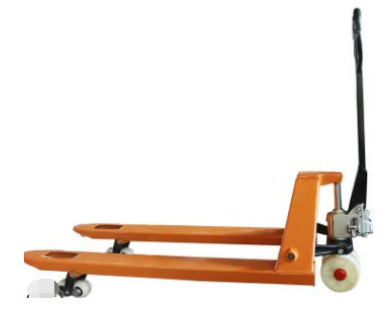News Details
Manual hydraulic handling vehicle gear shifting and operation steps
Manual hydraulic handling vehicles, also known as oxen, have a simple structure and high usage rate. They are generally used in supermarkets to transport goods. The manual hydraulic transport vehicle has three gears, each with different functions.

Handle
The middle is the positioning gear, where the car neither rises nor falls.
Pulling up is neutral, which is the descending gear and pressure relief gear.
Pulling down is shifting, which means closing the oil seal can increase its hydraulic pressure.
Sometimes, when there is air in the oil pump of a manual hydraulic transport vehicle, it may not rise or rise slowly during use. In this case, it is only necessary to change the gear to eliminate the air. Just shift the gear up and press the handle a few times as usual. At this time, although the vehicle body will not rise, it can effectively eliminate the air in the pump body. Generally, after 10-20 times of pressure, the air can be emptied.
Operation steps of manual hydraulic handling vehicle
Manual hydraulic handling vehicle is a small volume hydraulic device that is small in size, light in weight, capable of working in narrow passages and entering elevators with full load. It is mainly used in crowded places where horizontal handling is required, and is widely used in factories, warehouses, and other places where horizontal handling is needed due to its compact body, flexible movement, light weight, and good environmental performance. The operation steps of manual hydraulic handling vehicle are as follows:
Pressing: Turn the control handle to the lower position and press the directional handle to press the forklift. The weight of the goods being forked must not exceed the limit weight of the forklift.
Pulling goods: After lifting the goods off the ground with pressure, turn the control handle to the middle position to drag the goods. Do not run while pulling the goods, move slowly.
Unloading: After pulling the goods to the destination, turn the control handle to the left and unload the forklift until the goods land.
Empty operation: During empty operation, the forklift should be appropriately pressed and raised to prevent wear and tear on the front axle support frame from contact with the ground.

